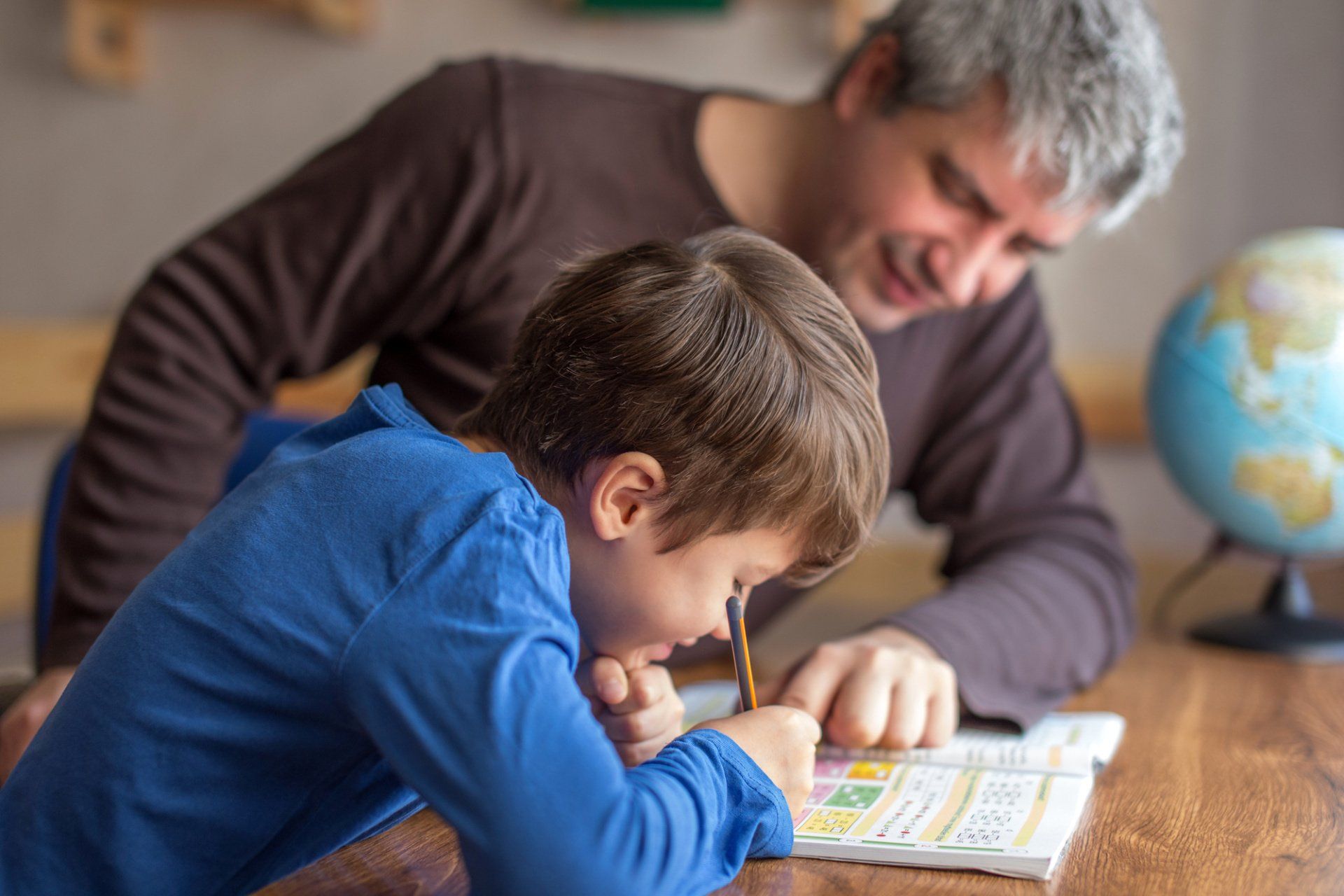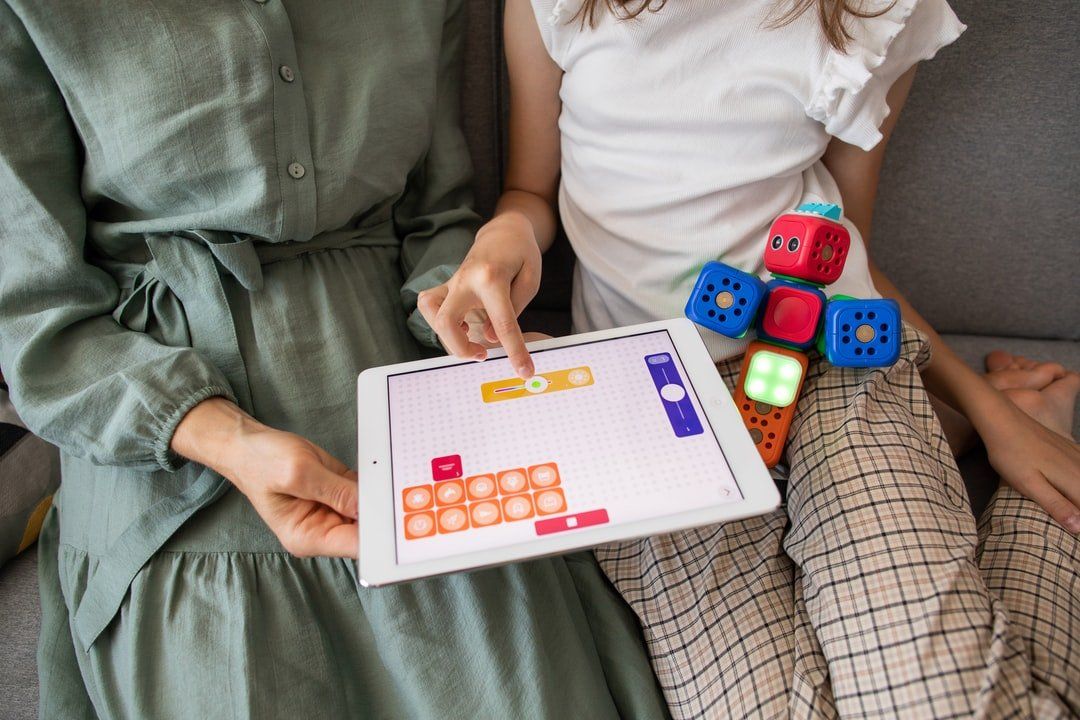How to Know if Your Child Needs an Individualized Education Plan
sites • October 27, 2021
Do you think your child needs an Individualized Education Plan (IEP)? Be sure and learn if your child is eligible for an IEP.
Perhaps you've noticed lately that your child is struggling to keep up with their lessons. If so, you're probably wondering what can be done to prevent them from falling behind to a detrimental degree.
An
estimated 14% of all public school students in America currently have an individualized education plan (or IEP). Should your child be one of them?
An IEP can have immense benefits for the students that receive them. It can make the difference between a child growing to have negative feelings about school and having a positive and rewarding experience. However, it's not always easy to determine whether or not an IEP is the solution your child needs.
Read on as we discuss what an IEP is, how it can help, and what makes a student eligible to receive one.
What Is an Individualized Education Plan?
Individualized education plans fall under the umbrella of the 2004 update to the Individuals with Disabilities Education Act (IDEA). At its core, an IEP is a document that outlines the specific needs and goals of students with disabilities.
The establishment of the IEP gave parents and primary caregivers more say in their child's education. In order to put together an IEP, parents and caregivers work closely with their child's educators. The objective is to ensure that students are able to continue their education in the public school environment by providing them with appropriate accommodations.
One of the IEP benefits is that it can often be implemented in the standard environment offered by your child's school. For example, students may work with the assistance of an aid or attend class in a special education resource room. Some students with an IEP may thrive best in a separate school environment, however.
Which Students Can Benefit from an IEP?
There are
13 specific disability categories that are legally recognized under the IDEA. Children who have one or several of these disabilities may qualify for an IEP.
These disabilities include but are not limited to SLDs such as dyslexia, autism spectrum disorder, visual or hearing impairment, and orthopedic impairment. Disabilities that resulted from accidents, such as traumatic brain injuries, may also qualify your child for an IEP.
It's important to note that simply having one of these disabilities may not qualify a child for an IEP. It must be demonstrated that their disability directly impacts their ability to learn under the standard curriculum.
How Do You Request an IEP for Your Child?
The process of requesting an IEP begins with a referral. This referral may come from a parent, teacher, or doctor who is concerned about a child's development and learning. The concerned party can get the ball rolling by getting in touch with the school counselor or psychologist.
The next step often involves a conference with the parent, child, or both. The school's counselor or psychologist may wish to observe your child in their classroom setting. They may also want to conduct an initial evaluation of your child's performance in school.
If the counselor or psychologist agrees that an IEP may be useful, the IEP evaluation process can begin.
What to Expect from the IEP Evaluation Process
During the evaluation phase, the school will put together a multidisciplinary team. This team can include professionals such as speech or occupational therapists. It can also include special educators and other relevant specialists.
The goal is to take a closer look at your child's performance in school. The evaluation team may observe your child's behavior in class, their academic performance, and their ability to get through daily tasks. They may also ask your child to perform a series of tests.
As a parent or caregiver, you can say no to the evaluation process.
How Are IEPs Developed?
The typical process of developing an IEP involves the student's evaluation team, the parents, and the teacher. Together, you can establish both short and long-term goals to help your child meet their educational needs.
An IEP outlines any support services your child will need to meet these goals. For example, this could include regular speech therapy or counseling. It could also include specific transportation needs.
If your child needs a large number of services, the IEP will include how to best administer them. The goal is to avoid disrupting your child's school day as much as possible.
An IEP is an evolving document. Each year, you will undergo the IEP development process again. This ensures that as your child progresses and changes, the IEP adapts accordingly.
Signs That Your Child May Need an IEP
As we mentioned earlier, having a disability doesn't necessarily qualify your child for an IEP. So, how can you determine if an IEP is the right choice?
If your child's teacher has expressed concern, talk to them about it. If they've tried different strategies to help your child and the strategies aren't quite working, it may be time for an IEP.
Another sign may arise when a problem isn't new but isn't improving. When you've ruled out other possibilities (such as lack of interest or motivation), it may be time to see if your child could benefit from additional accommodations.
We offer our services to all families who need educational advocacy. One of
our services is support and consultation, where we create space to discuss your child's specific circumstances. If you're not sure if an IEP is the right call, we're here to help.
Contact Us for Further Assistance
An individualized education plan can make all the difference for thousands of students in America. If you believe that your child could benefit from an IEP, don't hesitate to reach out to your school district.
Do you have additional questions about IEPs? Do you want to schedule a consultation to learn more about your options?
Contact us today and we'll help you find the best solutions for your children.

Are you frustrated after failing to reach and teach children with ADHD after trying every teaching technique you can think of? It can be difficult to know how to adapt your teaching style to help children with ADHD to have the best possible learning experience. Thankfully there are several strategies that you can make use of to help all children to have the best possible education. If you're wondering how to get better at teaching children with ADHD, read on and we'll tell you what you need to know. Understanding How Children With ADHD Learn the Best One of the first things to recognize about youth who have ADHD is that they seek novelty. Their attention naturally orients towards high-interest kinds of activities. This is why they thrive in learning situations where the curriculum is engaging and active. In order to offer children this opportunity, consider embracing activities that involve physical movement and motor activity. For example, if you are teaching children with ADHD about reading street signs, you should invite the child to be active in order to practice obeying what the signs say. You should also try to give the child options to choose from. By letting them have options, they have more freedom to be curious. This is important because it gives them chance to lean into their strengths in order to learn and grow. Children with ADHD struggle in situations where they get bored, such as while they're waiting for a teacher to draw out instructions for an activity on the whiteboard. If they need to wait for their turn to complete a task, they'll need more stimulation than other children will. They also have a need to feel competent at what they're doing. This is why you should make a point of rewarding the child you're working with by offering things like badges, prizes, high fives, and opportunities for leadership. Teaching Children With ADHD by Recognizing Their Social Needs and Challenges Make sure that you make a point to help children with ADHD to sense their relationships with others. Since social interaction is usually their most valued kind of stimulation, it is imperative that you offer kind support and individualized attention. Kids with ADHD also like to see the emotional responses from others. This is why it's common for them to be attracted to kids who are known to be troublemakers. Many teachers often don't realize that their angry and aggressive responses to children with ADHD who are causing trouble only serve to reinforce the behavior that the teachers are trying to stop. Instead, it's a better idea to be calm and unemotional when trying to redirect a child who has ADHD. Top Strategies Teaching Strategies for Children Who Have ADHD There are many different strategies for children with ADHD that can support them to have the best possible learning experience. Here are several of the most important things that you can do to help them. Match Their Skill Level You should first make sure that you're assigning schoolwork that matches a students' skill level. The reason for this is that they will usually want to avoid classwork that is too difficult to do or that is too tedious for them. Give Many Options You should also give the children as many options as you can. For example, you could offer them a list of ten activity choices for practicing math equations. You might consider using flashcards, writing on the whiteboard, or on their digital device. Visual Reminders Are Important Another of the great strategies for children with ADHD is to provide visual guidance. If you're going to explain a skill such as telling the time, do this by using an overhead projector or a whiteboard in order to explain the activity's instructions. Present Important Concepts in New Ways You could also start finding engaging ways to display important ideas that you want children to work with. One way to do this is by writing these concepts onto bright posterboard which you hang up around the classroom. Encourage Group Participation When you encourage your class to participate as a group, you help children with ADHD to be more engaged in what they're doing. You can do this by requesting students to write responses to exercises on a dry erase board, having students speak responses to questions in unison, and encouraging your class to raise their hands if they agree with something that you say. Go Out of Your Way to Offer Accommodations for Children With ADHD There are many children who will need special accommodations in order to help them to learn in the best way possible. Some of these accommodations could be more complex. Other types of accommodations are straightforward enough that schools for children with ADHD can easily offer them. This might include things like keeping an eye on a student's work or creating a plan to assure that they don't fall behind in class. You should also try giving students more time on the tests they're taking, offering shorter assignments, and breaking longer assignments into smaller segments. There Are Many Easy Ways to Support Children With ADHD Once you know how to start teaching children with ADHD, it's easy and fun for you to do. Many teachers don't understand the unique needs that children with ADHD have. Once they recognize their unique needs, it's much easier to create situations where all of their students can thrive. It's important to recognize that you're not alone in teaching children with ADHD. This is why we offer various services that are tailored for each person who we work with. If you want to support children with ADHD who you work with in the best possible way, please visit our services page in order to find out how we can help you.

The unique parenting journey of a special needs child is a path that is often difficult to navigate. It's a path that may involve different treatments and interventions. It's not what you expected. You listen to the specialists, read all the books, and learn to understand your special needs child. Yet, you may still second-guess the important role that you play in your child's special needs education. You shouldn't. You are your child's expert and greatest supporter. As the parent, you have the most complete understanding of your child's physical, emotional, and social development. Your family dynamic is unique. This dynamic is the continuity in your child's life. Sharing family information may give insight into what is needed in the classroom environment. Involvement in your child's special needs education will make a positive difference in the overall learning experience. So how do you get involved? Learning the educational options available and choosing the best approach to meet your child's education is a place to start. Special Needs Education Special Education is a broad term that refers to services that can be provided for your child. This approach to instruction should address the specific needs of your child's disability. The public school system in your area will determine access and opportunities for your child. Educational standards are also designated by your public school system. Adaptations for your child's physical or movement needs will be given as deemed necessary. This does not mean that your child will be in a special education or a resource room all day. According to the Individuals with Disabilities Education Act (IDEA), children who receive special education services should be in the least restrictive environment. Your child should be learning in the same classroom as other children. This will be made accessible with the appropriate accommodations. Individualized Education Plan (IEP) The Individualized Education Plan is covered under the Individuals with Disabilities Education Act. Teachers, parents, administrators, and other school personnel work as a team to create an educational program. This program is developed to meet the individual needs of the child. The IEP evaluates a child's current educational performance. This will take a look at the special needs of the child, how those needs affect involvement in the classroom, and learning outcomes. The IEP includes reasonable annual goals for the child broken down into short-term objectives. These benchmarks tackle physical, behavioral, or social needs, as well as academics. Any supplemental services or classroom modifications needed to assist the child will also be listed on the IEP. Parental involvement is required at the annual IEP meeting, which can be intimidating. But remember, you are the most important member of your child's educational team. You know your child best. Take the opportunity to ask questions and give input to customize a learning experience that fits your child. The 504 The 504 plan was established in 1973 and is a section of the U.S. Rehabilitation Act. It provides accommodations for students with physical or mental impairments within a regular classroom setting. When a student is not eligible for special education services or an IEP, a 504 plan will provide the modifications for academic success. Like the IEP, parents are part of the 504 team, and accommodations are reviewed annually. With a 504 , a parent can call for a plan review at any time to evaluate academic concerns or request other appropriate changes. Your involvement in the process will assist in customizing your child's educational experience. This can ensure your child's academic and social success. Parent as Educational Partner There is no one more invested in your child's success than you, the parent. You understand your child's specific requirements to function happily in life. Embrace your role as an educational partner and become a proactive parent. Through interactions and observations of your child, you can share changes or discoveries with the education team. By sharing this information, you offer the educators insight into behaviors that may not be observed in the classroom. Your continued involvement as a parent will increase your child's chance for personal and academic success. Development The role of parents in special needs education is to assist in helping your child's development. You understand there are many challenges ahead, but there will also be many triumphs. The developmental path may not be typical, but you want your special needs child to have the support necessary to meet as many milestones as possible. Communicate with your education team. Let the teachers know you are invested in supporting classroom efforts at home. Partnering with your child's teachers will reinforce the learning efforts on both sides. You understand that your child's development may not be a straight line. Know that each step achieved by your child is an extraordinary success. Advocate All that you do for your child comes from a place of love and caring. Advocating for your child requires research and explaining the disability. You will need to have many conversations with each professional involved in your child's life. This can be exhausting, yet you soldier on. As the parent, you believe in your child and know you must act on their behalf. As an advocate, your parental involvement in special needs education will give the teacher a better understanding of your child. Through advocacy, you will establish the foundation for future conversations. This will build a cooperative relationship that benefits your child and helps them grow. You Are Not Alone As a parent, understanding the pathway of a special needs education for your child is difficult. Yours is not a typical road of parenting. You may worry and second-guess decisions. There may be many potholes along the way, making you feel unsure and discouraged. You are not alone. Aliada Educational Advocacy, My Learning Ally , offers support and consultation for parents learning to navigate the educational system for a child with special needs. Experienced consultants are available to listen to your concerns and work with you to find the best solutions for your child. Reach out to us . We are here to help.


